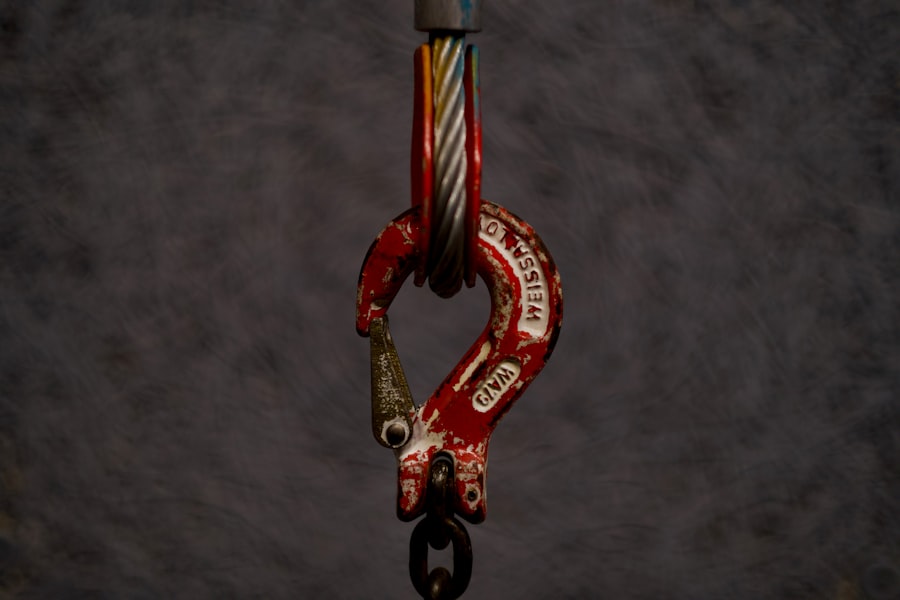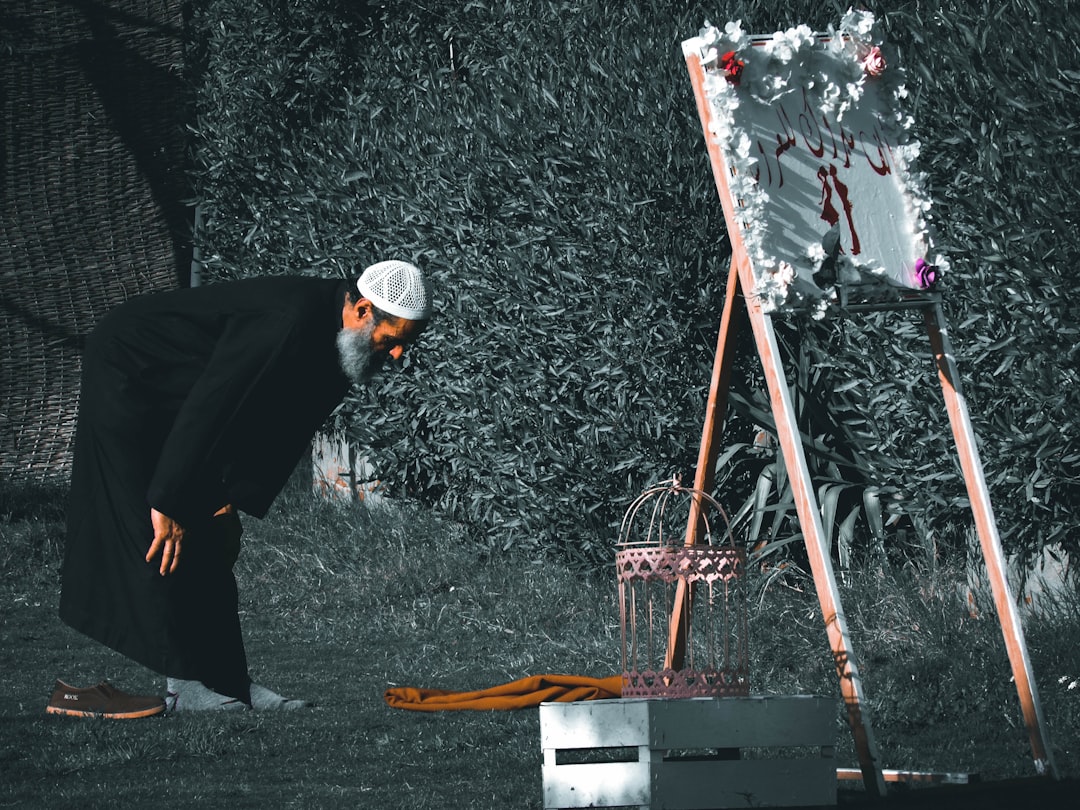Saddam Hussein, the former president of Iraq, was executed on December 30, 2006, marking a significant moment in the history of Iraq and the broader Middle East. The execution took place in a location that would become infamous, not only for the act itself but also for the political and social ramifications that followed. The site of his execution was situated in the Al-Kadhimiya district of Baghdad, an area steeped in history and significance.
This location was chosen for its proximity to the capital and its association with the Iraqi judicial system, which had been under intense scrutiny since the fall of Saddam’s regime in 2003. The choice of Al-Kadhimiya as the execution site was emblematic of the tumultuous period Iraq was experiencing. The district is known for its religious significance, housing one of the holiest shrines in Shia Islam, the Imam Kadhim shrine.
This juxtaposition of sacredness and the grim act of execution created a complex narrative that resonated deeply within the Iraqi populace. The location was not merely a backdrop; it became a symbol of the struggle for justice and retribution in a country grappling with its identity post-Saddam.
Key Takeaways
- Saddam Hussein was executed at a location in northern Baghdad, Iraq
- The execution site, Al-Kadhimiya, is a prominent Shia Muslim shrine and pilgrimage site
- The infamous execution room was located in a building within the Al-Kadhimiya complex
- The Iraqi government played a central role in the planning and execution of Saddam Hussein’s death
- The choice of Al-Kadhimiya as the execution location sparked controversy and criticism both domestically and internationally
The Execution Site: Al-Kadhimiya
Al-Kadhimiya is a district that has long been associated with both reverence and conflict. Its historical roots trace back centuries, making it a focal point for various cultural and religious movements within Iraq. The area is characterized by its vibrant streets, bustling markets, and significant religious landmarks, which stand in stark contrast to the somber event that unfolded there.
The execution site itself was relatively unremarkable from the outside, yet it held immense weight in the hearts and minds of those who understood its implications. The choice of Al-Kadhimiya as the execution site was not without its controversies. Many viewed it as a politically charged decision, reflecting the sectarian divides that had emerged in Iraq following the U.S.-led invasion.
The district’s predominantly Shia population had suffered greatly under Saddam’s Sunni-dominated regime, and executing him in such a significant location was seen by some as an act of justice. However, others perceived it as a provocative move that could exacerbate existing tensions within the country.
The Infamous Execution Room

The execution room where Saddam Hussein met his end has become a focal point of intrigue and speculation. Described as stark and utilitarian, it lacked any semblance of grandeur or ceremony. The room was equipped with basic furnishings, including a noose and a gallows, which served as grim reminders of the finality of life.
The simplicity of the execution room stood in stark contrast to the complex emotions surrounding Saddam’s death, encapsulating the harsh reality of justice in a nation still reeling from years of conflict. Witnesses who later recounted their experiences spoke of an atmosphere thick with tension and anticipation. The execution room was not merely a physical space; it became a symbol of the broader struggle for accountability in Iraq.
For many, it represented a turning point in the nation’s history—a moment when the past collided with the present, forcing Iraqis to confront their collective trauma. The room itself, now forever linked to Saddam’s legacy, serves as a reminder of the complexities surrounding justice and retribution in a society grappling with its own identity.
The Role of the Iraqi Government
| Metrics | Data |
|---|---|
| Population | 40 million |
| GDP | 178.1 billion |
| Unemployment Rate | 16% |
| Government Type | Federal parliamentary republic |
| Prime Minister | Mustafa Al-Kadhimi |
The Iraqi government played a pivotal role in orchestrating Saddam Hussein’s execution, navigating a landscape fraught with political challenges and public sentiment. Following his capture in December 2003, Saddam was put on trial for crimes against humanity, with the government seeking to establish a sense of justice for the atrocities committed during his rule. The trial was marked by significant international attention, as it represented not only a domestic reckoning but also a broader commentary on human rights and accountability.
As the execution date approached, the Iraqi government faced immense pressure from various factions within the country and abroad. There were calls for leniency from some who believed that executing Saddam would only deepen sectarian divides and perpetuate cycles of violence. Conversely, many Iraqis viewed his execution as a necessary step toward healing and moving forward from years of oppression.
Ultimately, the government’s decision to proceed with the execution reflected its commitment to asserting authority and delivering justice in a nation still grappling with its past.
Controversy Surrounding the Execution Location
The choice of Al-Kadhimiya as the execution site sparked considerable controversy both domestically and internationally. Critics argued that executing Saddam in such a historically significant area could inflame sectarian tensions and provoke unrest among various groups within Iraq. The district’s association with Shia Islam added another layer of complexity to an already fraught situation, as many viewed it as an act that could be interpreted through sectarian lenses.
Moreover, international observers raised concerns about the fairness of Saddam’s trial and subsequent execution. Questions about due process and legal representation loomed large, leading some to argue that his execution was more about political expediency than genuine justice. This controversy surrounding the execution location underscored the challenges faced by Iraq as it sought to navigate its post-Saddam identity while addressing deep-seated grievances among its diverse population.
The Execution Process

The execution process itself was shrouded in secrecy and conducted under tight security measures. On the night of December 30, 2006, Saddam Hussein was led into the execution room where he would face his fate. Reports indicate that he remained composed throughout the proceedings, displaying a defiance that had characterized much of his rule.
The method chosen for his execution—hanging—was swift yet brutal, reflecting both historical practices and contemporary standards for capital punishment. Witnesses described a chilling atmosphere as officials prepared for the execution. The presence of security personnel underscored the gravity of the moment, as tensions ran high both inside and outside the execution site.
As Saddam was led to the gallows, many observers noted that this moment would be etched into history—a culmination of years of conflict and suffering for countless Iraqis. The execution process itself became emblematic of a nation grappling with its past while striving to forge a new future.
Security Measures at the Execution Site
Given the high-profile nature of Saddam Hussein’s execution, security measures at Al-Kadhimiya were exceptionally stringent. Authorities implemented extensive protocols to ensure that both the execution itself and surrounding events proceeded without incident. This included deploying armed guards, conducting thorough screenings of all personnel involved, and establishing secure perimeters around the site to prevent any potential disruptions or protests.
The heightened security reflected not only concerns for safety but also recognition of the symbolic weight carried by Saddam’s execution. As tensions simmered within Iraq’s diverse communities, officials understood that any misstep could lead to violent repercussions. Thus, security measures were designed not only to protect those present but also to maintain order during an event that would undoubtedly resonate throughout the nation.
Witness Accounts of the Execution
Witness accounts from those present during Saddam Hussein’s execution provide valuable insights into this historic event. Many described an atmosphere charged with emotion—ranging from relief to anger—as they witnessed a figure who had long been synonymous with oppression meet his end.
The reactions among witnesses varied widely based on their personal experiences and perspectives on Saddam’s rule. For some, witnessing his execution represented closure after years of suffering under his regime; for others, it raised uncomfortable questions about vengeance versus justice. These accounts highlight how deeply personal narratives intersected with broader national sentiments during this pivotal moment in Iraq’s history.
International Reaction to the Execution
The international reaction to Saddam Hussein’s execution was swift and multifaceted, reflecting diverse perspectives on justice and human rights. Some world leaders hailed it as a necessary step toward accountability for atrocities committed during his rule, viewing it as an affirmation of international norms regarding human rights violations. Others expressed concern over the implications for stability in Iraq and questioned whether executing such a controversial figure would truly contribute to peace.
Human rights organizations also weighed in on the matter, emphasizing concerns about due process during Saddam’s trial and subsequent execution. They argued that while accountability is essential for healing societies torn apart by violence, it must be pursued through fair legal processes that uphold human rights standards. This international discourse surrounding Saddam’s execution underscored how deeply interconnected issues of justice are with global perceptions of governance and human rights.
Legacy of Saddam Hussein’s Execution Site
The legacy of Saddam Hussein’s execution site continues to resonate within Iraq and beyond.
For many Iraqis, it serves as a reminder of both triumph over tyranny and ongoing struggles for reconciliation in a nation still healing from years of conflict.
As time passes, discussions surrounding Saddam’s legacy have evolved, prompting debates about how best to remember this chapter in Iraqi history. Some advocate for memorializing victims of his regime rather than focusing solely on his execution; others argue that acknowledging this moment is crucial for understanding Iraq’s complex journey toward democracy and stability.
The Future of Al-Kadhimiya as a Historical Site
Looking ahead, Al-Kadhimiya stands at a crossroads as both a historical site and a living community grappling with its past. Efforts to preserve its significance while fostering dialogue about reconciliation are essential for shaping its future identity. As Iraq continues to navigate challenges related to governance, sectarianism, and national unity, Al-Kadhimiya may serve as a focal point for discussions about healing and moving forward.
Incorporating educational initiatives that explore both historical events like Saddam’s execution and broader themes related to justice can help foster understanding among diverse communities within Iraq. By embracing its complex legacy while promoting dialogue about shared experiences, Al-Kadhimiya has the potential to transform from a site associated with division into one that embodies hope for unity and reconciliation in an ever-evolving landscape.
Saddam Hussein, the former President of Iraq, was executed on December 30, 2006, at Camp Justice, an Iraqi military base in the Baghdad suburb of Kadhimiya. This event marked a significant moment in Iraq’s history, as it followed his conviction for crimes against humanity. For more detailed insights into the circumstances surrounding his execution and its implications, you can read a related article on the topic by visiting Hey Did You Know This. This source provides a comprehensive overview of the events leading up to and following Hussein’s execution.
WATCH NOW! How the US Hunted and Captured Saddam Hussein: The Untold Story of Operation Red Dawn
FAQs
Where was Saddam Hussein executed?
Saddam Hussein was executed at Camp Justice, an Iraqi military base located in Kadhimiya, a neighborhood of Baghdad, on December 30, 2006.
Why was Saddam Hussein executed at Camp Justice?
Camp Justice was chosen as the location for Saddam Hussein’s execution due to its secure and controlled environment, as well as its proximity to the Iraqi government and legal authorities.
Who carried out Saddam Hussein’s execution?
Saddam Hussein’s execution was carried out by Iraqi government officials and security forces. The execution was supervised by the Iraqi Ministry of Justice.
Was Saddam Hussein’s execution controversial?
Yes, Saddam Hussein’s execution was controversial due to the manner in which it was carried out and the timing of the execution. The video of the execution, which was leaked to the media, showed Saddam Hussein being taunted by some of the witnesses present, leading to international condemnation.
What was the aftermath of Saddam Hussein’s execution?
Saddam Hussein’s execution led to widespread protests and unrest in Iraq, particularly among his supporters. It also sparked international debate and criticism regarding the fairness and legality of the trial and execution process.
